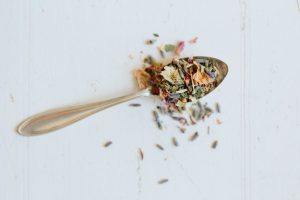The Naturopathic Co.

You're using an outdated browser. Please upgrade your browser to improve your experience.
SPEED READ>> Free radicals cause harmful oxidation resulting in DNA damage, disease, and accelerated aging, but antioxidants provide a protective effect. The best way to ensure a high antioxidant intake is to regularly consume a rich source of colourful fruit and vegetables, as well as nuts, seeds, legumes, and seafoods. Ten powerful antioxidants that we should all be consuming regularly are: glutathione, astaxanthin, resveratrol, curcumin, proanthocyanidins, quercetin, CoQ10, lutein, vitamin C, and hydroxytyrosol.
The world we live in requires a higher antioxidant intake than ever before. This is due to the increase in allostatic load (diet, pH and nutrient status, environmental toxins and chemicals, inflammation, aging, stress, medications/drugs) causing increased oxidation in the body.
Free radicals cause harmful oxidation resulting in DNA damage, disease, and accelerated aging, but antioxidants provide a protective effect. They penetrate each cell, absorbing free radicals and playing a crucial role in the destruction of cancerous cells and cell mutations.
Antioxidants are most abundant in plant sources, particularly fruits and vegetables. The best way to ensure a high antioxidant intake is to regularly consume a rich source of colourful fruit and vegetables, as well as nuts, seeds, legumes, and seafoods.
So which antioxidants are the most powerful, and which should we be consuming daily?
Glutathione is the ‘master’ antioxidant within every cell of the body, and is involved in the recycling of other antioxidants so that when you increase your glutathione levels, you can increase other antioxidants also (such as vitamin C and E).
Did you know? Glutathione is made by the body from three key amino acids: cysteine, glutamine, and glycine, but the demand for glutathione is high, and the body may struggle to keep up with requirements without the consumption of precursors.
It’s crucial for phase II liver detoxification, as well as boosting immune function, protective against oxidative stress in the mitochondria, maintains energy and metabolism, protective against environmental toxins, and many other critical functions.
Astaxanthin is water and fat-soluble cartenoid, which makes this antioxidant one of the most powerful due to its ability to protect the whole cell, not just one part of it.
Astaxanthin is particularly good for easing sore joints and muscle damage and has also shown to be effective in promoting eye, heart, and brain health, as well as having a positive effect on blood chemistry and lowering blood pressure.
Astaxanthin also provides significant protection against UV radiation. It is the antioxidant that gives some seafood its pink colour.
Did you know? According to research, Astaxanthin’s ability to absorb free radicals has been shown to be 6,000 times higher than vitamin C and 550 times higher than vitamin E.
Resveratrol is considered a powerful anti-aging antioxidant to combat oxidative stress and tissue damage. When consumed, resveratrol activates SIRT1 genes and parameters of the cells’ aging process are positively altered (Price 2012).
It has been shown to be beneficial in treatment of age-related conditions such as cardiovascular disease (preventing build-up of plaque in the arteries), obesity, type II diabetes, and protecting cognitive health.
Resveratrol is found in red wine, and is one of the contributing reasons as to why the ‘French don’t get fat’, more specifically, the French have less heart disease despite the fact they consume more wine.
Did you know? This bioflavonoid antioxidant is produced by plants as a response to stress or injury, which provides an anti-inflammatory and protective effect to the plant. It’s these protective effects that play an important role in the regulation of cellular aging.
Curcumin is an antioxidant found in turmeric (Curcuma longa) that has multiple therapeutic properties. It belongs to the same family as ginger and has been used as a medicinal herb for centuries, due to its many therapeutic properties including antioxidant, analgesic, anti-inflammatory, antiseptic activity, and anticarcinogenic activity.
Research has shown curcumin to be strongly anti-inflammatory, providing beneficial effects to conditions such as hypotension, cancer, skin ailments, mental health conditions, gastrointestinal conditions, and arthritis / joint pain (Menon 2007).
Turmeric has even been shown to be as effective as some pharmaceutical anti-inflammatory medications (Takada 2004).
Did you know? Curcumin is poorly absorbed into the bloodstream, and therefore it’s best to consume black pepper (or in supplement form piperine) which has been shown to increase absorption by 2,000% (Shoba 1998).
Proanthocyanidins are polyphenolic oligomeric flavonoids, powerful antioxidants and anti-inflammatory agents.
Research has shown proanthocyanidins have a positive effect on cardiovascular health such as lowering the risks of hypertension and stroke, have anti-cancer and anti-tumour activity, are anti-allergic, and also have beneficial effects on encouraging healthy bacteria to flourish in the gut (Yang 2018).
Did you know? Many plants produce proanthocyanidins in their fruits, bark, leaves and seeds in order to provide a protective effect (Cos 2004).
The flavonoid antioxidant quercetin has anticancer, anti-viral, anti-microbial, and anti-inflammatory properties, and is one of the most abundant antioxidants found in plant foods.
Quercetin is beneficial for cardiovascular health issues, autoimmunity, allergies and respiratory concerns, stress, and inflammatory conditions, and so much more.
Did you know? Absorbability of quercetin is improved with glucose, so consuming quercetin from fruit is a good choice for maximum absorption (Hollman 1997).
CoQ10, a powerful lipid antioxidant, plays a fundamental role in the conversion of energy from carbohydrates and fats to ATP.
CoQ10 can neutralize free radicals, improves energy, modulate and boost the immune system, and has been shown to be beneficial for cardiovascular disease, high blood pressure, cancer, diabetes, Parkinson’s disease, allergies, and fatigue (Rajiv 2011).
Cells involved with immune function are highly energy-dependent and therefore require an adequate supply of CoQ10 for optimal function.
Did you know? CoQ10 is synthesized in the liver, but is found throughout the body in mitochondrial membrane of the heart, lungs, liver, kidneys, spleen, pancreas, and adrenal glands, but it decreases with age, which is why it’s important to regularly uptake this vital antioxidant through a varied diet (Rajiv 2011).
Lutein has beneficial effects for eye health, the cardiovascular system, the immune system, and has an anti-cancer properties.
The antioxidant lutein helps prevent damage to the eyes caused by sun exposure, and provides a preventative measure to age-related vision loss and cataracts.
Did you know? The body can’t synthesize lutein on its own, which is why it’s important to regularly uptake this vital antioxidant through a varied diet.
Vitamin C, ascorbic acid, is an antioxidant that boosts immune function and protects the body from pathogens, as well as repairs tissue and boosts the absorption of other nutrients such as iron.
Did you know? Because vitamin C is a water-soluble vitamin, any excess intake is not stored in the body but excreted. Higher intake levels of vitamin C may act as a diuretic or cause diarrhea.
Deficiency in vitamin C may cause symptoms such as bleeding gums, easy bruising, and scurvy.
Hydroxytyrosol is a polyphenol with anti-inflammatory, antibacterial, neuroprotective, cholesterol-lowering and cardioprotective properties. It is the most powerful antioxidant, with an ORAC value of 68,576 – for example it is considered to be 3 times higher than CoQ10 (Richards 2018).
Its ability to absorb damaging free radicals and protect cells from damage is therefore extremely high and believed to be due to its oleic content.
Did you know? Hydroxytyrosol is primarily found in the fruit, leaves and pulp of olives.
Mediterranean countries have lower rates of cardiovascular disease and cancer than other Western countries, and this is believed to be partly linked to the high intake of olives and olive oil as part of the Mediterranean diet.
Antioxidant intake in the western world is low. From this list, it’s easy to see the varied benefits of consuming high antioxidant levels, for ourselves and for our children, with intake being particularly vital for absorbing harmful free radicals that cause DNA alterations and cancer mutations.
As always, prevention is the best cure, and so by intaking high antioxidant levels, we provide a protective effect to the body. If insufficient antioxidants are consumed, the body is unable to revert the harmful effects of free radicals and oxidation.
Keep in mind that the body may need more concentrated doses of some of these nutrients. It’s important to seek professional advice in this instance, as therapeutic doses of some vitamins and minerals may be contraindicated in certain conditions and cause more harm than good.
Take the first step in overcoming your health concern and finally regaining your best health. Click here to book your initial naturopathic consult.
> We are results-orientated.
> We don’t push unnecessary supplements.
> We support you back to health as quickly as possible.
> We offer high-contact support throughout the process.
> We have exceptional 5 star reviews on google.
> We offer naturopathic consultations Australia-wide.

Yvette – Naturopath and Nutritionist at The Naturopathic Co.
Yvette is a qualified Naturopath and Nutritionist, MINDD Practitioner, member of the Naturopaths and Herbalists Association of Australia.
Yvette specialises in the treatment of gut health and digestive complaints, skin issues, mood disorders, hormonal concerns, fatigue, and more.
We offer services in major cities across Australia
References
https://articles.mercola.com/sites/articles/archive/2013/02/10/cysewki-discloses-astaxanthin-benefits.aspx
https://www.ncbi.nlm.nih.gov/pmc/articles/PMC1768013/
https://www.ncbi.nlm.nih.gov/pubmed/26923269
https://www.ncbi.nlm.nih.gov/pmc/articles/PMC3545644/
https://www.ncbi.nlm.nih.gov/pubmed/17569207
https://www.ncbi.nlm.nih.gov/pubmed/17569207
https://www.ncbi.nlm.nih.gov/pubmed/9619120
https://www.hindawi.com/journals/bmri/2018/8584136/
https://www.ncbi.nlm.nih.gov/pubmed/15134524
https://www.ncbi.nlm.nih.gov/pubmed/15019969/
https://www.ncbi.nlm.nih.gov/pubmed/12074969/
https://www.ncbi.nlm.nih.gov/pubmed/9414116
https://www.ncbi.nlm.nih.gov/pmc/articles/PMC3178961/.
Comments are closed.